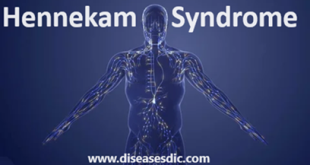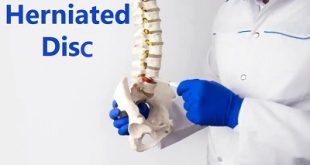Definition
Hidradenitis suppurativa (HS) is a chronic skin disease which causes painful, boil-like lumps that form under the skin and often secrete pus and blood. HS occurs most often in areas where skin rubs together, such as the armpits, groin, and under the breasts. Symptoms usually begin after puberty. The first sign may be a single pocket of pus (abscess) or hard lumps associated with hair follicles. The abscesses or lumps often change to painful swollen clusters of skin sores that drain a bloody and often, bad smelling discharge. As the sores heal, they may leave hardened, rope-like scars or form tunnels under the skin (called sinus tracks) that can be disfiguring and make movement difficult. As time goes by, the skin lesions occur more often and get worse over time.
In most cases, the cause of HS is unknown. Genetics, environment, and hormonal factors may play a role. Some cases of HS have been associated with specific genes, including NCSTN, PSEN1, and PSENEN. Diagnosis of HS is made based on the clinical symptoms. Treatment of HS is determined by the severity of the symptoms and can include topical or oral antibiotics, anti-inflammatories, other medications, and surgery. Losing weight and stopping smoking can also improve the symptoms. HS causes chronic pain, significant scarring, and can be socially isolating, but is not life-threatening. People with HS have an increased chance to feel depressed or anxious, which, along with chronic pain, may impact their quality of life.
Risk factors
HS is more common in women. Other things that may raise the risk are:
- Having family members who have HS
- Smoking present or past
- Obesity
- Diabetes
- Metabolic syndrome
- High cholesterol
Stages of hidradenitis suppurativa
Causes of hidradenitis suppurativa
Doctors aren’t sure what causes HS. What’s known is that HS isn’t contagious and isn’t caused by poor hygiene or any type of infection.
A family history is reported in one-third of people with the condition, suggesting that there may be a genetic link.
Some studies have looked at mutations in specific genes and found a connection to HS, but more research is needed.
Other possible causes of HS include the following:
- An overactive immune system
- Being overweight
- Smoking tobacco
- Having another inflammatory disease of the immune system, especially inflammatory bowel disease (IBD)
- Having acne
- Abnormal sweat gland development
HS usually occurs shortly after puberty, so hormones are also likely involved in the development of the condition
Symptoms
Hidradenitis suppurativa occurs in areas of the body that contain sweat glands including the armpits, groin, upper thighs, buttocks, scalp, and under the female breasts.
Early symptoms include:
- Pimple-like bumps (but they occur in areas you typically do not find acne, like under the armpits and in the groin area)
- Blackheads, which tend to develop in pairs (again, appearing in areas where you wouldn’t typically find acne)
- Painful lumps under the skin, which may be up to marble-sized
- Boils
Hidradenitis suppurativa complications
Persistent and severe hidradenitis suppurativa often causes complications, including:
Infection: The affected area is susceptible to infection.
Scars and skin changes: The wounds may heal but leave rope-like scars or pitted skin.
Restricted movement: Sores and scar tissue may cause limited or painful movement, especially when the disease affects the armpits or thighs.
Obstructed lymph drainage: The most common sites for hidradenitis suppurativa also contain many lymph nodes. Scar tissue can interfere with the lymph drainage system, which may result in swelling in the arms, legs or genitals.
Social isolation: The location, drainage and odor of the sores can cause embarrassment and reluctance to go out in public, leading to sadness or depression.
Diagnosis and test
If your dermatologist suspects that you may have HS, here’s what typically happens. Your dermatologist will:
- Ask where you have lumps, draining, and other signs of HS. HS tends to occur in certain areas.
- Examine some (or all of) the lesions. HS has certain features, which to the trained eye, distinguish it from acne, boils, or other conditions.
- Talk with you about the lesions. Asking about your symptoms, when the bumps appear, and other specifics helps your dermatologist give you an accurate diagnosis.
If your lesions are leaking fluid, your dermatologist may swab a bit of the fluid onto a slide to examine. This can tell your dermatologist if you have an infection.
If you have HS, your dermatologist will create a treatment plan tailored to your needs
Treatment
Treatment for this skin disease is most successful when started early. But it may be hard to diagnose. It may be mistaken for other skin conditions. The painful bumps also often return. So stopping new bumps and limiting scarring is important. Treatment options include:
Warm compress: Putting a warm, wet washcloth on the affected skin may help.
Lifestyle changes: Your symptoms may get better if you lose weight or stop smoking, if needed. Also avoid shaving or other irritants, such as deodorant or perfume.
Antibiotics: For mild cases, an antibiotic for the skin (topical) may help. You may need oral antibiotics if you have a severe case. They can help prevent further infection.
Other oral medicines: Over-the-counter pain medicines can ease pain and inflammation. You may need stronger medicines for a severe case. These medicines include corticosteroids or a retinoid. These may cause side effects.
Injected medicines: A steroid may be injected into the bump to ease pain. A newer biologic medicine may be injected to ease severe symptoms.
Surgery: Surgery can drain and remove the painful bumps. For severe cases, the doctor may cut out the entire area of affected skin or destroy it with a laser.
Other surgical procedures include:
Skin Tissue-Saving Excision with Electrosurgical Peeling (STEEP): This procedure aims to keep as much healthy tissue as possible, while removing tissue with lesions. Patients tend to recover well and have a good cosmetic outcome, but there is a higher risk of HS recurrence with STEEP than with wide surgical excision.
Cryoinsufflation: Liquid nitrogen is injected into the sinus tracts underneath the lesions. It’s performed monthly until the tracts disappear.
Laser and light therapies: Different types of lasers and lights can be used to help clear the skin, decrease inflammation, kill bacteria, and destroy hair follicles.
Prevention of hidradenitis suppurativa
Because doctors do not know what causes hidradenitis suppurativa, there is no known way to prevent it. However, there are some simple steps that can be taken at home to lessen the symptoms of hidradenitis suppurativa. These include:
- Achieve a healthy weight
- Wear loose-fitting clothes
- Take warm baths
- Do not shave affected areas
- Clean affected areas daily with antibacterial soap
- Avoid smoking
 Diseases Treatments Dictionary This is complete solution to read all diseases treatments Which covers Prevention, Causes, Symptoms, Medical Terms, Drugs, Prescription, Natural Remedies with cures and Treatments. Most of the common diseases were listed in names, split with categories.
Diseases Treatments Dictionary This is complete solution to read all diseases treatments Which covers Prevention, Causes, Symptoms, Medical Terms, Drugs, Prescription, Natural Remedies with cures and Treatments. Most of the common diseases were listed in names, split with categories.








my wife have those boils on her armpits which is causing her a lot of irritation,
Please consult a doctor for diagnosis and treatment of boils in the armpits.